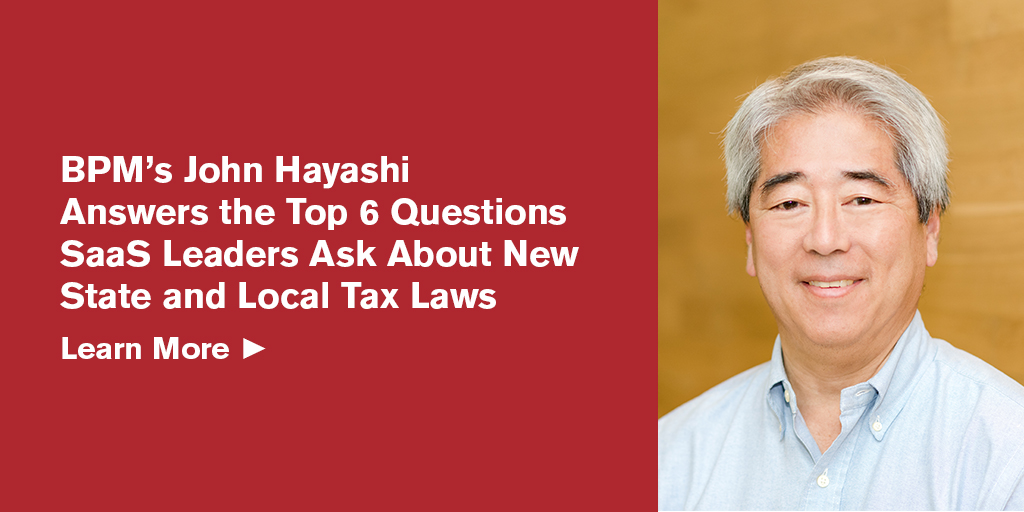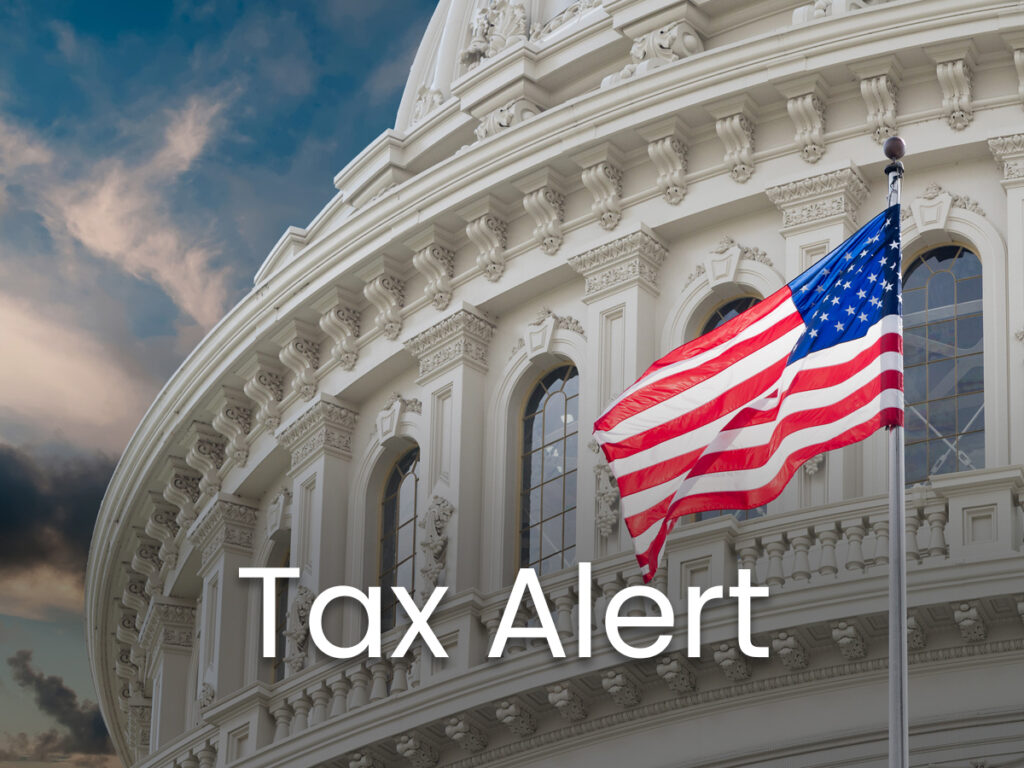This article originally appeared on October 1, 2019 in the San Francisco Business Times and Silicon Valley Business Journal. To view the original article, click here.
Until recently, businesses selling Software-as-a-Service (SaaS) products were accustomed to making relatively simple determinations whether to collect sales tax. Namely: Collect sales tax where you have a physical presence and SaaS is taxable; otherwise, do not.
Because SaaS, by its nature, does not require widespread business operations to market and is taxable in fewer than 20 states, sales tax compliance was not a focal point for many SaaS businesses. However, Wayfair, the shortcut reference to the U.S. Supreme Court’s decision in South Dakota v. Wayfair, Inc. handed down in June 2018, has changed all of that. Mention Wayfair to a SaaS business today and instead of thinking home furnishings, sales tax now comes to mind, or at least it should.
After the Wayfair ruling, South Dakota and other states passing similar laws can now obligate remote sellers of SaaS products to collect sales tax on their sales. Successful SaaS businesses can easily establish a legal obligation to collect tax in 100% of the states taxing SaaS products, even if they have no in-state presence. SaaS sellers feel like they now have to be sales tax experts to know where they have nexus and whether their product is taxed.
SaaS CEOs and CFOs: Do you know where you have exceeded nexus thresholds and whether you are selling a non-taxable service or taxable software? You better if you want to be sure a due diligence team does not uncover a material sales tax exposure in your operations.
The following questions will focus the Wayfair issue for today’s SaaS businesses.
What is an economic nexus threshold and why does it impact my sales tax obligation?
Economic nexus thresholds are levels of business activity that when exceeded, automatically impose a tax collection obligation on remote sellers, even if they do not have a physical presence in-state. South Dakota’s collection obligation kicks in after $100,000 of in-state sales or 200 of in-state transactions per year.
Similar economic nexus thresholds now exist in over 40 of the 46 sales tax states and the District of Columbia, but some states like California and Massachusetts have decided already that $500,000 and $100,000 of in-state sales respectively are better thresholds and they also do not need a transaction threshold.
SaaS businesses must now know all the different economic thresholds, and know when they are exceeded, so they can timely comply with new sets of laws that, unfortunately, may or may not be similar to the sales tax laws they are familiar implementing.
How do I know if my SaaS product is taxable in a state?
Because states cannot uniformly agree whether a SaaS product is a non-taxable service, a non-taxable intangible, a taxable data processing service or a taxable use of software, your determination must be tracked on a state-by-state basis.
Taxability of your product may come down to a state tax auditor’s own interpretation of the facts surrounding your product and how their sales tax laws should be applied. You must also track current state laws because the taxation of SaaS products can change.
Beginning in July 2018, Indiana’s new law exempted sales, leases and licenses of SaaS products. Sales of SaaS products in Vermont became exempt starting July 1, 2005. Similarly, Louisiana’s Department of Revenue repealed their revenue ruling that a charge for software accessed remotely is taxable.
Are economic nexus thresholds and laws taxing SaaS products permanent?
No. As explained previously, state legislators and administrators can change economic nexus thresholds and the exemption of SaaS products without much public notice. With digital tools and services becoming an increasingly large part of today’s modern economy, many states have been forced to adapt their nexus standards and their taxation of SaaS products to maintain or replace sales tax revenue lost from disappearing brick-and-mortar locations.
State lawmakers are creatively characterizing, or re-characterizing, SaaS as taxable sales of tangible software or data processing services. As an incentive to bring jobs into their state, legislators have exempted products and services from sales tax. Some cynics see changing SaaS laws as a given, requiring periodic monitoring to implement changes timely.
What are the consequences for not knowing when I have a collection obligation and where my SaaS product is subject to tax?
Overlooking collection obligations and not charging tax on sales of your SaaS product could create unpaid tax liabilities that will never go away and “responsible persons” in your business could be held personally liable for the unpaid sales taxes. Notices assessing a liability on SaaS sales will likely include penalties and interest on top of the unpaid taxes.
With sales tax rates over 10% in some places, penalties that could reach 25% of the unpaid tax, and interest assessments equal to the tax owed if the sales tax remains unpaid long enough, you can no longer pin your financial hope on not getting caught.
What steps can I take to minimize my unpaid sales tax liabilities in prior years?
Amounts due on unpaid taxes can be proactively minimized, especially if a state has not contacted your business first to investigate prior period business activities. Voluntary disclosure agreements, amnesties or other negotiations with a state can limit the periods where states can issue assessments.
In many states, penalties can be abated successfully. An XYZ letter campaign to your purchasers might also reduce unpaid liabilities. You might just be lucky enough to reduce your assessments materially with a bit of effort.
What else can I do?
SaaS businesses may be smart to devote executive resources to oversee its sales tax responsibilities with the day-to-day activities assigned to a team, an individual, or outside consultants.
Investing in a trusted tax advisor to guide you through the maze created by economic nexus thresholds and the inconsistent characterization of SaaS products can also help you know when and where to charge sales tax. It might well be your best investment of the fall.
To learn more, visit BPM SALT.
 This article originally appeared on October 1, 2019 in the San Francisco Business Times and Silicon Valley Business Journal. To view the original article,
This article originally appeared on October 1, 2019 in the San Francisco Business Times and Silicon Valley Business Journal. To view the original article, 

